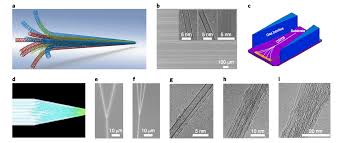
Breaking News
 Is Yen Carry Trade's unwind about to trigger a repo market meltdown? Let's dive into the mec
Is Yen Carry Trade's unwind about to trigger a repo market meltdown? Let's dive into the mec
 Chairman Rand Paul Releases New Report Revealing Hundreds of Billions...
Chairman Rand Paul Releases New Report Revealing Hundreds of Billions...
 Get Schiffty Music Video | Rick and Morty | Adult Swim
Get Schiffty Music Video | Rick and Morty | Adult Swim
Top Tech News
 This tiny dev board is packed with features for ambitious makers
This tiny dev board is packed with features for ambitious makers
 Scientists Discover Gel to Regrow Tooth Enamel
Scientists Discover Gel to Regrow Tooth Enamel
 Vitamin C and Dandelion Root Killing Cancer Cells -- as Former CDC Director Calls for COVID-19...
Vitamin C and Dandelion Root Killing Cancer Cells -- as Former CDC Director Calls for COVID-19...
 Galactic Brain: US firm plans space-based data centers, power grid to challenge China
Galactic Brain: US firm plans space-based data centers, power grid to challenge China
 A microbial cleanup for glyphosate just earned a patent. Here's why that matters
A microbial cleanup for glyphosate just earned a patent. Here's why that matters
 Japan Breaks Internet Speed Record with 5 Million Times Faster Data Transfer
Japan Breaks Internet Speed Record with 5 Million Times Faster Data Transfer
 Advanced Propulsion Resources Part 1 of 2
Advanced Propulsion Resources Part 1 of 2
 PulsarFusion a forward-thinking UK aerospace company, is pushing the boundaries of space travel...
PulsarFusion a forward-thinking UK aerospace company, is pushing the boundaries of space travel...
 Dinky little laser box throws big-screen entertainment from inches away
Dinky little laser box throws big-screen entertainment from inches away
 'World's first' sodium-ion flashlight shines bright even at -40 ºF
'World's first' sodium-ion flashlight shines bright even at -40 ºF
CNT bundle material for flywheels 40 times better than batteries

These are ultralong (several centimeters) carbon nanotube fibers have been made into stronger bundles. The tensile strength of CNTBs (Carbon nanotube bundles) is at least 9–45 times that of other materials. If a more rigorous engineering definition is used, the tensile strength of macroscale CNTBs is still 5–24 times that of any other types of engineering fiber, indicating the extraordinary advantages of ultralong Carbon nanotubes in fabricating superstrong fibers.
A synchronous tightening and relaxing (STR) strategy improves the alignment of the carbon nanotubes to increase the strength.
Tsinghua University researchers are trying to get the fiber into mass production for use in military or other areas.
The material would be very useful for sports equipment, ballistic armor, aeronautics, astronautics and even space elevator.
If the material could be used in flywheels for energy storage the energy density would 40 times more than lithium-ion batteries. Electric cars with carbon nanotube bundle flywheels would have a range of 10,000 miles.
Super carbon nanotube bundle flywheels would likely first be used to provide bursts of power for railguns and combat lasers.



